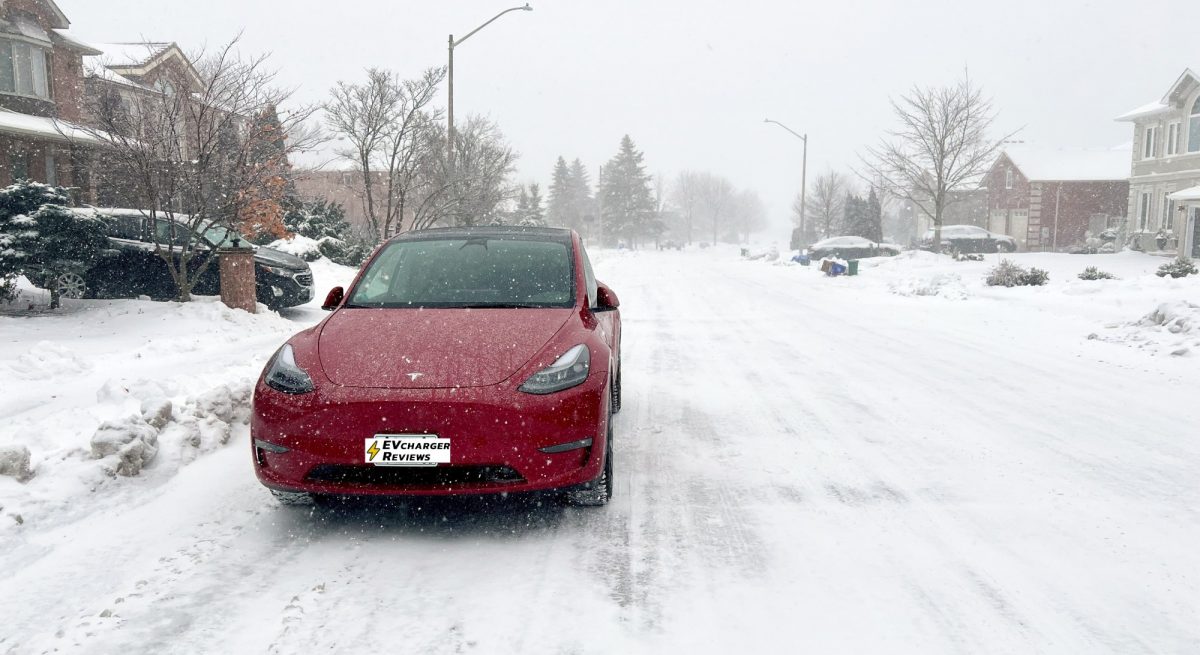This year’s holiday season brought some of the coldest temperatures in recent memory to the continental United States and Canada. Even regions with milder winters experienced dangerously cold temperatures and wind chill. Should you worry about permanent damage and performance degradation of your EV from exposure to extreme cold? Studies such as this one from the Alaska Center for Energy and Power (ACEP) suggest that most people probably do not need to worry. EV batteries can be exposed to temperatures as low as -22° F (-30° C) and brought back to full potential without issue. With Battery Thermal Management System (BMS) becoming more common in inexpensive EVs, exposure to even colder temperatures is acceptable as long as the battery has sufficient charge to warm itself, or if the vehicle is plugged into the grid for energy.
Having that said, here are some tips and best practices for extreme cold weather events.
1. Plug-in When Possible
As mentioned earlier, the BMS in most EVs will attempt to maintain a safe temperature within the battery pack if it has enough available energy. It is therefore suggested to have your EV plugged in whenever possible. Even if the EV is not charging, the car taps into grid power to feed the electronics and thermal systems. If you have Level 1 or Level 2 charging available at home or at work, plugging in will help during cold weather.
2. Set a Higher Charge Limit
Driving in cold temperatures will consume more energy than in the summer. The drivetrain requires more energy to operate, and the passengers demand more energy for heating and comfort. Therefore it makes sense to set a higher charge limit in these conditions to have a larger safety buffer of energy. You really want to ensure that the BMS has enough energy available to keep the battery in a safe operating temperature range. When a battery is both depleted and cold, it is going to take much longer to warm it and recharge it.
If you normally charge your EV to 60 to 70%, consider setting the charging limit to 80 or 90%
3. Take it Easy when the battery is Cold
When temperatures are cold, everything moves slower inside the battery. The electrons move slower, and the coolant liquid slows down as well.
EVs will often set a charging speed limit and an acceleration power limit when the battery is very cold or very depleted, to protect the battery. But to be extra safe, you can do your part as the driver and refrain from aggressive acceleration or breaking when the battery is sitting in the cold for a while.
Charging or discharging the battery quickly when it is cold, could lead to permanent damage. This is also why EVs will precondition and warm their batteries in advance or fast Level 3 charging.
Drive gentry for the first 20-30 minutes after prolonged cold exposure. The act of using and driving the EV will pass energy and heat through the drivetrain and warm the motors and battery components. You should see the power limits disappear after some time driving.
Pro tip: If you want to warm the battery even faster, some EVs allow the user to manually begin the precondition warming process. For example, Tesla drivers can set the navigation to a Supercharger location to begin the battery warming process, even if they do not intend to go to a Supercharger. But beware that battery preconditioning will consume several miles of range.
Related
- PSA: Battery Preconditioning is a MUST Before DC Charging in the Cold
- Tested: Heat Pump in Cold Weather – How much range is lost?

